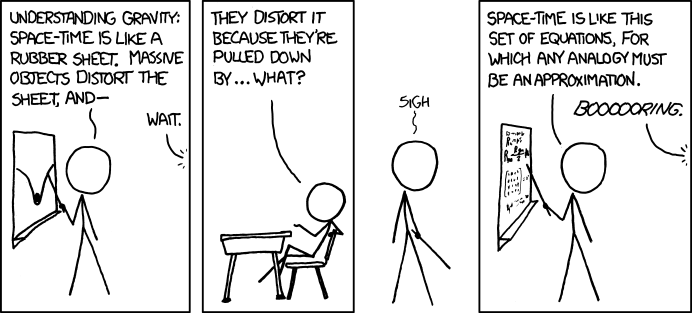
Yesterday, I went to the Dominican House of Studies for a symposium on Creation and Modern Science, and one of the speakers was Edward Feser, author of The Last Superstition (the book that got me started exploring Aquinas and hanging out with the DC Dominicans). His lecture was on the immaterial nature of thought, and there’s one facet of it I’d like to highlight here.
Feser was talking about the distinction between concepts and phantasms. As briefly as possible (i.e. blame me, not Feser, if I’m oversimplifying):
A phantasm is an instantiation of a concept. It’s a particular triangle, or a specific group of trees. It doesn’t have to be a picture of something that exists — you can have a phantasm of a unicorn.
A concept is clear and distinct. A concept of a triangle isn’t isoceles, equilateral, or scalene because you’re not picturing any specific triangle — you’re just understanding what the nature of a triangle is.
One good example Feser gave: you can have a concept of a chiliagon (a figure with 1000) sides, and that concept will be clearly distinct from a circle, or a figure with 1001 sides. But your phantasm of a chiliagon will ‘look’ the same as a figure with 999 sides or a circle. Your phantasms aren’t granular or clear enough to hit these details, but your concepts encompass all scales.
I’ve been thinking a lot about map-territory problems lately, so I was really interested in this thread of his argument. What I wanted to know was how we could be sure we were differentiating correctly between phantasms and concepts in the first place. If I tell you that I have a clear and distinct idea of a circle: that it’s a set of points at a fixed distance from one point, it certainly doesn’t sound like I’ve got a tangled-up-in-specificity-and-concreteness phantasm.
But several years of chemistry classes have taught me to be suspicious when I think I’ve finally drilled down to Truth. You see, in the first chem class I took, we learned about the orbitals electrons occupied in atoms. We learned about electrons as mini-moons, orbiting the nucleus. When we took AP Chem, our teacher told us, “Look, we lied to you about how orbitals worked, so you could have a reasonable approximation. Now we’re going to teach you the VSEPR model.” I immediately started wondering how many years of chem you had to take before your conceptual models of atoms stabilized, and your professors weren’t constantly telling you that everything you’d learned up to that point had been a noble lie.
But how good is my supposed concept of a circle in the first place? Just stating that definition is enough to logically entail plenty of properties of circles, however, my clear and distinct idea isn’t good enough to make me instantly remember and understand that the perpendicular bisector of any chord in a circle passes through the center of the circle. It doesn’t feel like I have a firm grasp of what a circle is, just that I have an approximation of it, or a partial listing of its properties, or that I’ve got a clear and distinct idea of one facet of the whole.
I posed this problem to Feser and he told me that my question had already presupposed that I had a sufficiently clear and distinct idea of a circle to know that I was ignorant of some of its properties. To be able to start approximating it in the first place, I needed a concept that I could test phantasms against. This sounded satisfying, but I’d be interested in your takes.












